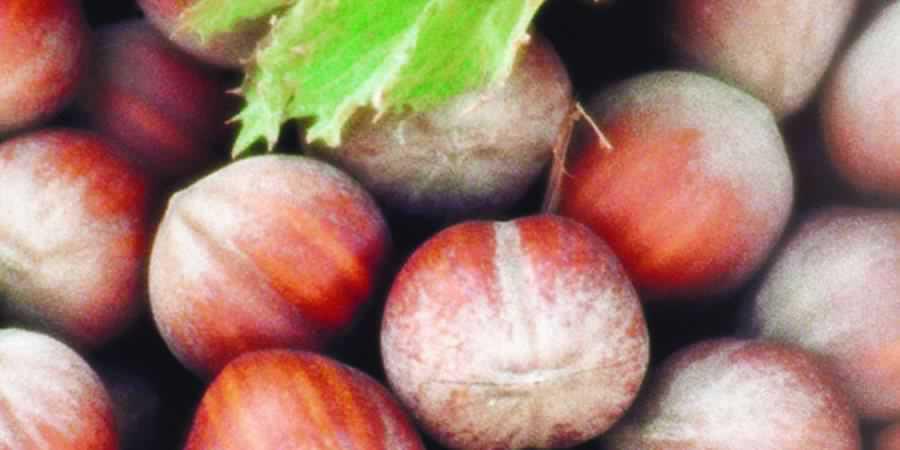Giffoni hazelnut I.G.P.
Product Description
The protected geographical indication "Nocciola di Giffoni" refers to one of the most valuable Italian varieties of all: the Tonda di Giffoni.
The distinctive characteristics of the "Nocciola di Giffoni" PGI are represented by: the perfectly rounded shape of the seed (which is the shelled hazelnut), which has white, firm pulp, with an aromatic flavour, and the thin and easily detachable perisperm (the internal film). . It is also particularly suitable for roasting, peeling and sizing, also for the medium and homogeneous size of the fruit. Due to these valuable characteristics, it is particularly suitable for industrial transformation and is therefore highly requested by industries for the production of pasta and grains, as well as, as a raw material, for the preparation of widely consumed confectionery specialities. In the area of origin it is also used as an ingredient in the preparation of a varied range of delicacies, including: sweets, cakes, ice creams, creams, but also unusual first courses and even hazelnut liqueurs.
But the "Nocciola di Giffoni" PGI is particularly suitable, precisely because of the shape and quality of the fruit, for direct consumption, both in shell and above all as a whole pitted snack, and it is this form of consumption that has stimulated a new renewed interest in this product. Natural or covered in chocolate, in honey or nougat, the "Giffoni Hazelnut" PGI is gaining favor with consumers even abroad.
Being a medium-early cultivar, the harvesting of the fruits usually begins in the third decade of August, after which the hazelnuts are dried to bring them to a humidity of 5-7% and finally they are deposited in cool and ventilated places, free of odors and humidity.
The highly nutritional value of the "Giffoni hazelnut" means that its consumption protects against atherosclerosis and cardiovascular diseases, thanks to a concentration of monounsaturated fatty substances, such as oleic acid, which have the function of strongly limiting the levels of cholesterol in the bloodstream. It is also rich in vitamins E, B, C, as well as minerals such as iron, copper, zinc, phosphorus, sodium, magnesium and selenium, which are essential for the correct functioning of the cellular system.
Background
Hazelnut cultivation in Campania is very ancient. Numerous testimonies can be found in Latin literature, starting from the 3rd century BC, and from archaeological finds, such as some charred remains of hazelnuts, exhibited at the National Museum of Naples. The spread of this crop in the rest of Italy seems to have begun in Campania, so much so that already in the 17th century the trade in hazelnuts, particularly towards other nations, had its economic importance.
The first evidence of the cultivation of the "Nocciola di Giffoni" PGI, a typically Salerno product, dates back to the Middle Ages, but it is only through commercial relations with the rest of Italy and abroad, in the Bourbon era, that the distinctive value of the quality of that product.
Subsequently, in the twentieth century, it recorded a cultural expansion precisely in relation to the strong demand from the confectionery industry. The territory of the Picentini and the Irno valley, on the other hand, is naturally suited to the cultivation of hazelnuts as this plant has always been present in the area spontaneously. Furthermore, the soil of volcanic origin offers the best fertility conditions, and in general the qualitative properties of Tonda di Giffoni can be traced back precisely to the fortunate mix of environmental, natural and human factors typical of the production area.
Production area
The production area of the "Nocciola di Giffoni" PGI is concentrated in the Salerno area, especially in the Irno valley and in the Picentini Mountains area where the 12 affected municipalities are located, which are: Acerno, Baronissi, Calvanico, Castiglione del Genovesi, Fisciano , Giffoni Sei Casali, Giffoni Valle Piana, Montecorvino Pugliano, Montecorvino Rovella, Olevano sul Tusciano, S. Cipriano Picentino, S. Mango Piemonte.
Fonte REgione Campania Assessorato Agricoltura


